What is osteoporosis?
Osteoporosis is a bone disease that occurs when the body loses too much bone, makes too little bone, or both. As a result, bones become weak and may break from a fall or, in serious cases, from minor bumps or even sneezing. Osteoporosis means “porous bone.” The disease affects approximately 10 million Americans, with another 44 million having low bone density (osteopenia), placing them at increased risk. Osteoporosis is often called a “silent disease” because bone loss occurs without symptoms, and people may not know they have the condition until they break a bone. The most common fractures associated with osteoporosis occur in the hip, spine, and wrist, though any bone can be affected.
Who gets osteoporosis?
Osteoporosis can affect people of all races, but white and Asian women are at highest risk. Women are much more likely to develop osteoporosis than men, particularly after menopause due to the sharp decrease in estrogen, a hormone that helps protect bones. Other risk factors include advancing age, family history of osteoporosis, small body frame, low sex hormones (estrogen in women, testosterone in men), thyroid problems, certain medications (especially corticosteroids), and lifestyle factors such as low calcium intake, vitamin D deficiency, sedentary lifestyle, excessive alcohol consumption, and tobacco use.
What are the symptoms of osteoporosis?
Early in the disease process, osteoporosis typically causes no symptoms, which is why it’s often called a “silent disease.” As the condition progresses and bones weaken, signs and symptoms can include:
- Back pain, caused by a fractured or collapsed vertebra
- Loss of height over time (getting shorter)
- A stooped posture or hunched back (dowager’s hump)
- Bone fractures that occur much more easily than expected, especially from minor falls or everyday activities
- Sudden, severe back pain that may radiate around the side
Even after bones have been weakened by osteoporosis, there may still be no symptoms until a bone fracture occurs.
How is it diagnosed?
Osteoporosis is diagnosed primarily through bone mineral density (BMD) testing, with the most common test being a central dual-energy x-ray absorptiometry (DXA or DEXA) scan. This painless test, similar to an x-ray, measures bone density at the hip and spine. The results are reported as a T-score, which compares your bone density to that of a healthy young adult. A T-score of -1.0 or above is normal, between -1.0 and -2.5 indicates osteopenia (low bone mass), and -2.5 or lower indicates osteoporosis. Your healthcare provider may also use FRAX® (Fracture Risk Assessment Tool), which calculates the 10-year probability of a major osteoporotic fracture based on individual risk factors. Blood and urine tests may be ordered to identify conditions that cause bone loss and to rule out other disorders that can mimic osteoporosis.
How is osteoporosis treated?
While there is no cure for osteoporosis, treatment focuses on slowing bone loss and preventing fractures. Treatment approaches include:
Lifestyle modifications:
- Calcium and vitamin D supplementation
- Regular weight-bearing and muscle-strengthening exercises
- Fall prevention strategies
- Limiting alcohol consumption
- Quitting smoking
Medications: Several types of medications are FDA-approved to help prevent and treat osteoporosis:
- Bisphosphonates (such as alendronate, risedronate, ibandronate, zoledronic acid)
- Hormone-related therapy (estrogen, raloxifene)
- Biological agents (denosumab)
- Bone-building medications (teriparatide, abaloparatide, romosozumab)
Treatment plans are individualized based on factors including age, sex, fracture risk, other health conditions, and medication side effects. Regular follow-up bone density testing is typically recommended to monitor the effectiveness of treatment.
Points to remember:
- Osteoporosis is common but not a normal part of aging
- The disease can be prevented and treated
- Getting enough calcium, vitamin D, and regular exercise are essential for maintaining bone health
- Many people with osteoporosis don’t know they have it until they break a bone
- If you have risk factors for osteoporosis, talk to your healthcare provider about bone density testing
For persistent bone pain, unexplained fractures, or if you have multiple risk factors for osteoporosis, see a rheumatologist to make the correct diagnosis and begin the proper treatment.


